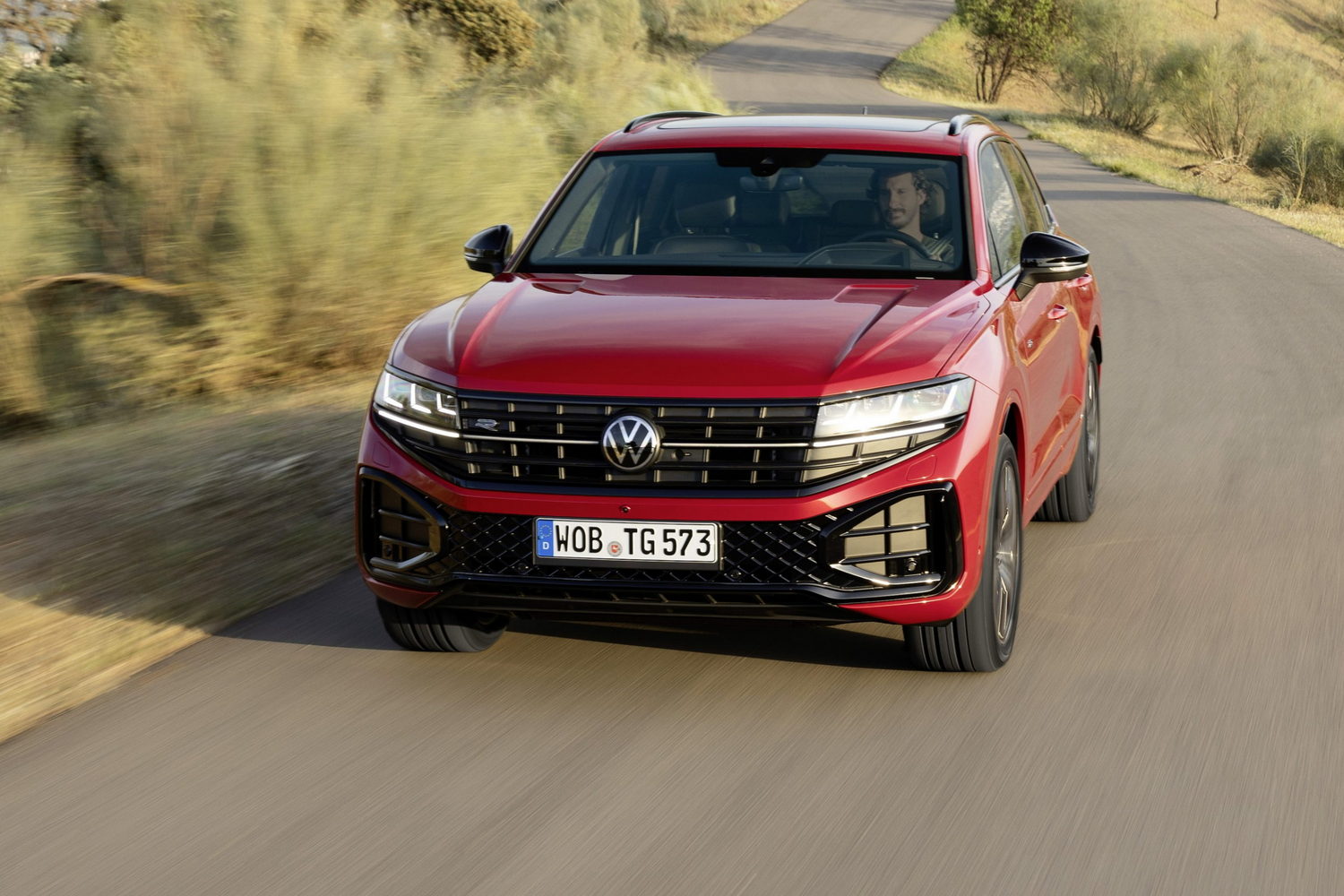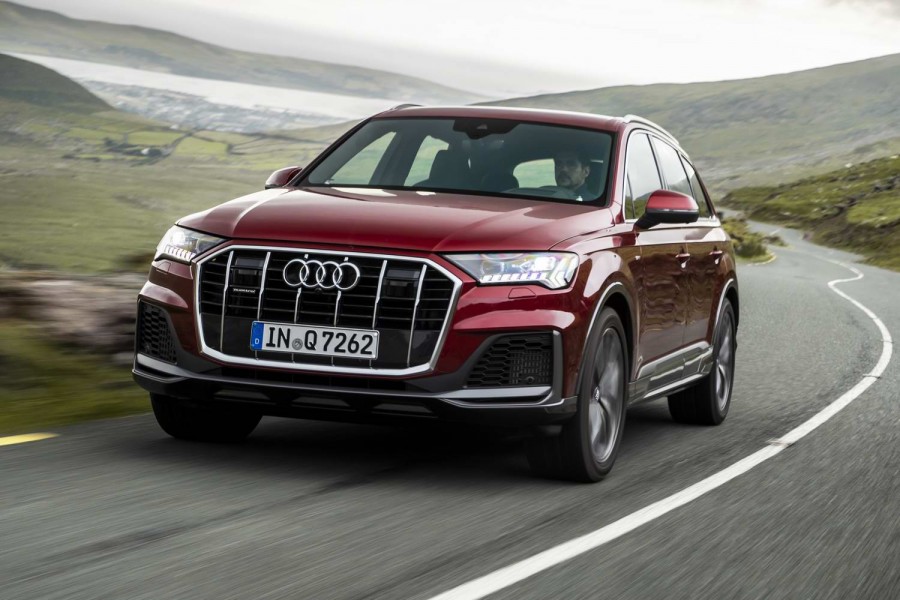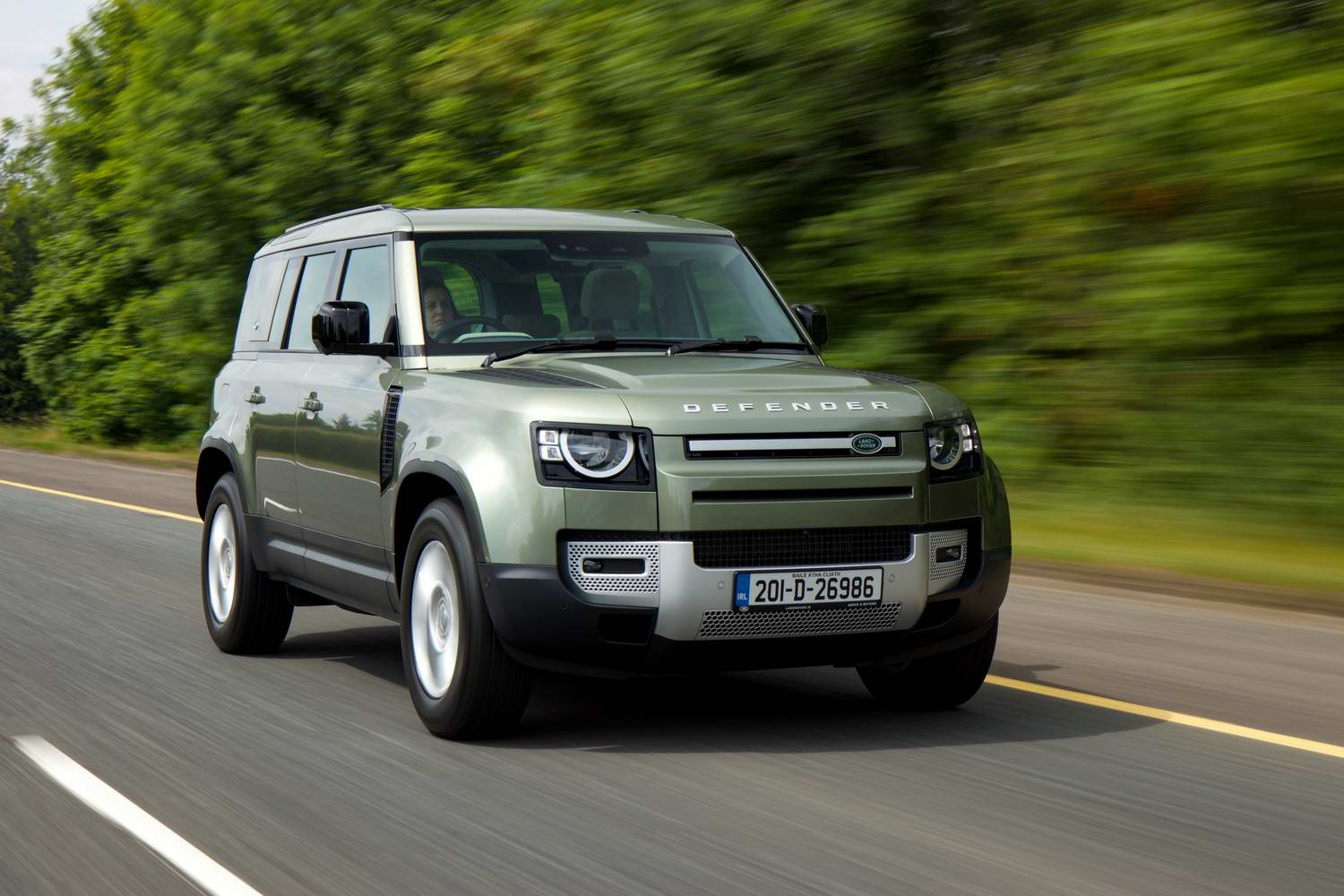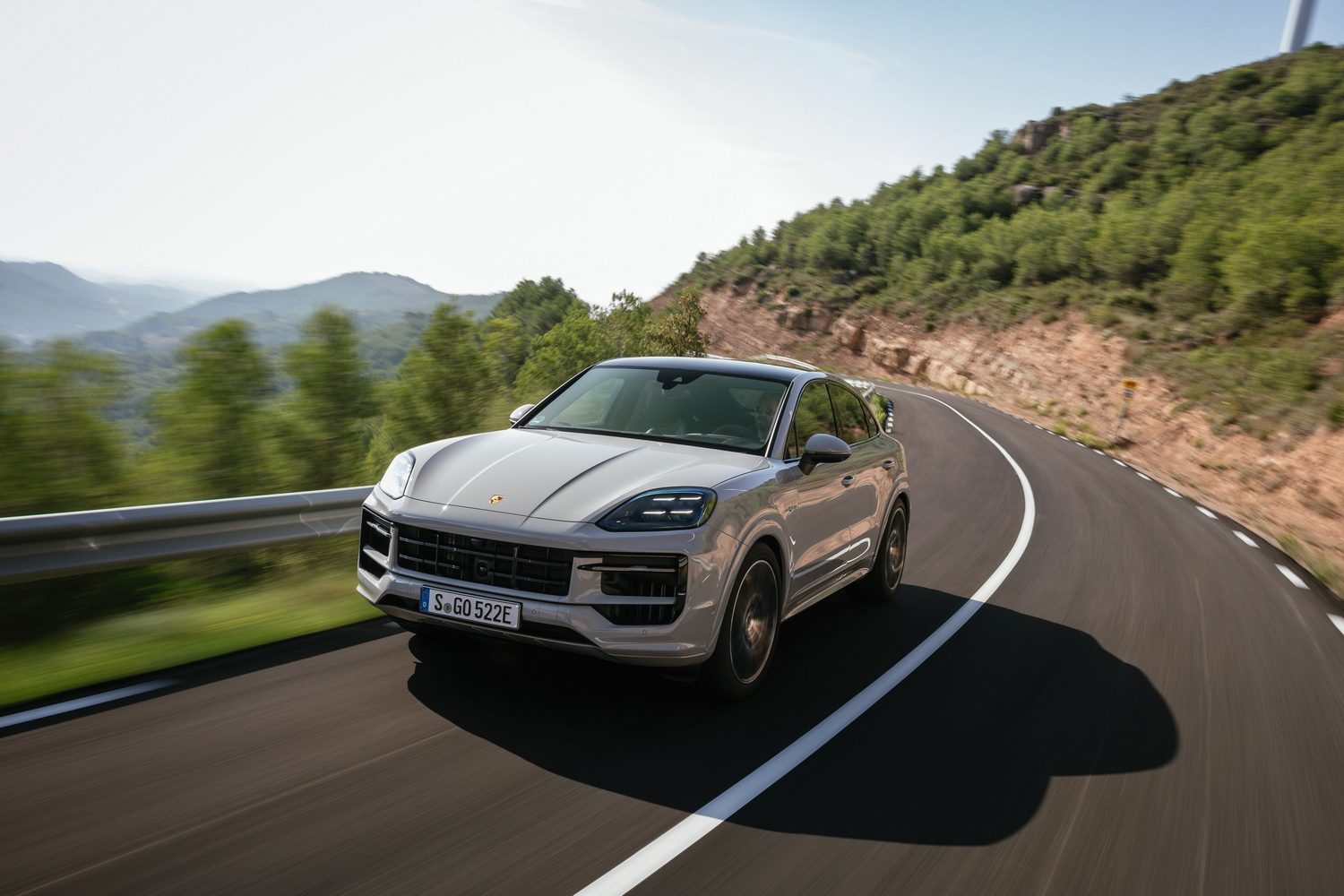Volkswagen's largest model, the Touareg, is in its third generation across 21 years of service and it's time for the mandatory midlife update of the big SUV. Not much has changed, as this is mainly some revisions of the exterior appearance and quite a lot of material finishing and tech updates in the cabin, but there are a few useful features included in the chassis, while air suspension and the ultra-smooth 3.0-litre TDI V6 engine make the most of the VW's natural talents. But is the Touareg really capable of unseating some of the top-level rivals that are competing against it?
In the metal
The current Touareg has always been comfortably the best-looking of all the generations of Volkswagen's prestige SUV and it's a generally handsome thing in the wider context of premium cars operating in this marketplace too, so understandably VW hasn't gone mad with the stylistic airbrush for the facelift. The main talking points are what have seemingly become de rigueur fashion accessories for every manufacturer looking to push upmarket these days, namely full-width light strips front and rear.
The facelifted Touareg's distinctive front grille and headlight arrangement, itself subtly reshaped from what went before, now contains a thin LED strip which links the lamp clusters to one another. Round the back, Volkswagen has been even showier with the illuminations, as not only is there now a 'coast-to-coast' light bar bisecting the hatch, but the Volkswagen emblem even lights up. That's a first for any product in the German manufacturer's range.
While we're on the subject of lights, the Touareg is equipped with the IQ.Light HD LED Matrix headlights. These are more powerful and impressive than any headlights the Touareg has had previously, but the most eye-catching thing about them (which isn't their main beam, as they're designed to be anti-dazzle) is the fact they are fitted with a mind-boggling 38,482 LEDs.
Inside, the attractive Innovision Cockpit is now standard-fit across the board, which means a 15-inch touchscreen infotainment system and 12-inch digital instrument cluster form the basis of the dashboard. And very good this system is too, in the main. Also, the steering wheel has lost its once-physical buttons for haptic touchpads.
As before, this is a high-quality cabin, enhanced in the facelift with more soft-touch materials and even extra padding on the sides of the transmission tunnel to protect the front-seat occupants' knees from bumping painfully against plastic while cornering in the Touareg. And it remains absolutely vast inside: there's loads of space in the back for adults to get comfortable, while the boot is a gigantic 810-1,800 litres.
Driving it
Volkswagen hasn't really changed the drivetrains at all with the Touareg facelift, but while there are five powertrains available to it in various global markets - one turbocharged petrol, two turbodiesels and two plug-in hybrid petrol-electrics - here in Ireland we get but a choice of two. You can either have the lower-output 231hp 3.0-litre V6 turbodiesel, or you can have the range-topping 462hp R plug-in hybrid. Weirdly, due to our CO2-based tax laws and VRT, the latter is less expensive to buy than the former.
Which makes the next sentence look somewhat contrary to write, but in our opinion the Touareg makes the most sense as a turbodiesel. As we drove UK-spec cars, we actually tested the more powerful version of the 3.0 TDI, which has an additional 55hp and 100Nm for overall outputs of 286hp and 600Nm when compared to the 231hp derivative, but as the base engine is exactly the same, and it still drives all wheels through Volkswagen's 4Motion system and an eight-speed Tiptronic automatic gearbox, we're confident in our verdict, despite slight performance advantages for the 286hp unit.
Volkswagen wants the Touareg to shoulder its way in among the likes of the Audi Q7, BMW X5 and Mercedes GLE mob, and maybe even pinch a few sales from the related Porsche Cayenne while it's at it. And to be fair, the execution of the overall Touareg package is good enough that the fervent VW fan might be able to make a strong case for it to stand such lofty comparisons.
But, for us, you're better off doing the one thing you can't do in a Porsche dealership - fit your SUV with a diesel engine. The torque-rich delivery of the TDI lump makes the most of the Volkswagen's dynamic set-up, which is geared much more towards comfort and refinement over speed and handling acuity.
To that end, the second recommendation we'd make to you is to get the Touareg on air suspension, because it massively improves the SUV's ride - and good news here, all Irish-spec cars come with this as standard. On its standard springs and dampers, the Volkswagen is just a bit too fidgety and a tad too eager to remind you that it's rolling on alloy wheels that are anything from 20 to 22 inches in diameter, so the fact that air is the default set-up here is most welcome indeed. It doesn't make the VW faultless as it rolls along, as it occasionally shimmies when encountering a close-ranked series of bumps in the road, but in the main it's much more soothing and comfortable on air than it is on standard springs.
Volkswagen has also done clever things to the electronic control systems that enhance the Touareg's role as a workhorse, such as parking and trailer assist features that help with getting such a large SUV into a tight space, or backing a horsebox into precisely the right location, while a new roof load sensor can even work out if you've got a weighty top-box on the Volkswagen and adjust its stability control system accordingly.
Overall, the facelifted Touareg is an accomplished performer, with a quiet passenger cabin, a strong turbodiesel drivetrain and great ride quality thanks to the standard air suspension.
What you get for your money
The updated Touareg R eHybrid starts from €104,775, while the 231hp TDI R-Line kicks off at €109,120. While those prices place it firmly in the sphere of the Porsche Cayenne, which starts from €101,599, the bonus is that pretty much everything on the Touareg is standard equipment. That includes leather upholstery, powered and heated front seats, a heated steering wheel, 20-inch alloy wheels, the IQ.Light HD LED Matrix headlamps, a surround-view camera, air suspension, Park Assist with Park Distance Control, wireless smartphone charging and app connect, the Innovision Cockpit dashboard array, dual-zone climate control, adaptive cruise control and - of course - the biggie, that illuminated rear VW badge, are all just some of the highlights of an extensive kit list.
In terms of running costs, Volkswagen quotes 8.2 litres/100km for the 231hp 3.0 TDI with 214g/km of CO2 emissions, which places it in the €1,250-a-year tax bracket and is also the reason it's more to buy than the 51g/km R eHybrid. Presumably, though, if you can afford a six-figure SUV in the first place, a four-figure annual road tax bill isn't going to put you off the turbodiesel Touareg. And you've probably got much more chance of actually achieving 8.2 litres/100km in the TDI than you have of getting anywhere near 2.3 litres/100km in the R eHybrid.
Summary
While there are some seriously talented vehicles in the Volkswagen Touareg's vicinity, and ones sporting truly heavyweight prestige badges at that, there's still much to recommend about the biggest of VWs. The steep asking price can't be fully overlooked, of course, but with its high-quality, roomy interior, smart exterior styling and excellent levels of refinement, it makes for a solid choice in the grand SUV segment. Just make sure you get the diesel engine, as - despite its elevated running costs in terms of taxation - it's the best powertrain going for this relaxing, facelifted Touareg.



















